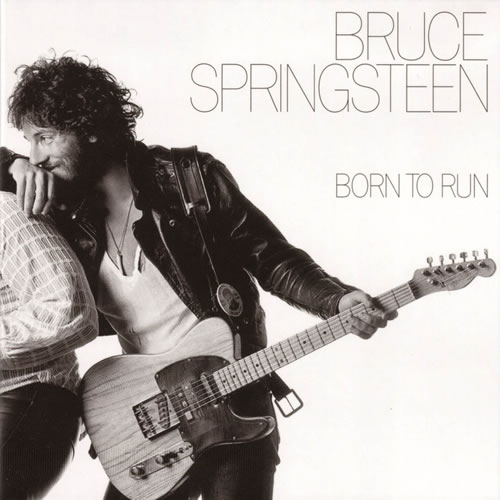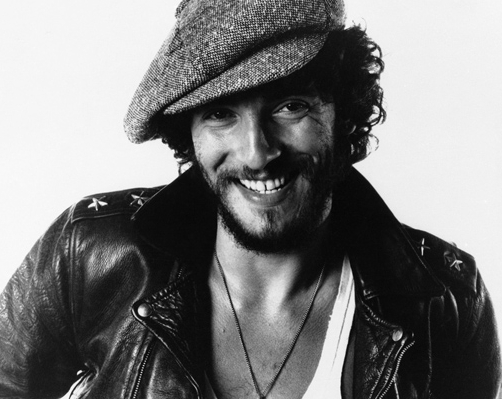OLD post … You’re being redirected to a newer version……
Don’t run back inside
Darling you know just what I’m here for
So you’re scared and you’re thinking
That maybe we ain’t that young anymore
Show a little faith there’s magic in the night
You ain’t a beauty but hey you’re alright
Oh and that’s alright with me
Happy Birthday to my fav Springsteen album!
From Wikipedia:
| Released | August 25, 1975 – (37 years old:) |
|---|---|
| Recorded | Record Plant, New York 914 Sound Studios, Blauvelt, New York January 1974 – July 1975 |
| Genre | Rock |
| Length | 39:26 |
| Label | Columbia |
| Producer | Bruce Springsteen, Mike Appel, Jon Landau |
Born to Run is the third album by the American singer-songwriter Bruce Springsteen. It was released on August 25, 1975 through Columbia Records. It captured the heaviness of Springsteen’s earlier releases while displaying a more diverse range of influences.
Born to Run was a critical and commercial success and became Springsteen’s breakthrough album. It peaked at number three on the Billboard 200, eventually selling six million copies in the US by the year 2000. Two singles were released from the album: “Born to Run” and “Tenth Avenue Freeze-Out“; the first helped Springsteen to reach mainstream popularity. The tracks “Thunder Road” and “Jungleland” became staples of album-oriented rock radio and Springsteen concert high points.
On November 14, 2005, a “30th Anniversary” remaster of the album was released as a box set including two DVDs: a production diary film and a concert movie.
The album is noted for its use of introductions to set the tone of each song (all of the record was composed on piano, not guitar), and for the Phil Spector-like “Wall of Sound” arrangements and production. Indeed, Springsteen has said that he wanted “Born to Run” to sound like “Roy Orbison singing Bob Dylan, produced by Spector.” Most of the tracks were first recorded with a core rhythm section band comprising Springsteen, Weinberg, Bittan, and bassist Garry Tallent, with other members’ contributions then added on.
In terms of the original LP’s sequencing, Springsteen eventually adopted a “four corners” approach, as the songs beginning each side (“Thunder Road”, “Born to Run”) were uplifting odes to escape, while the songs ending each side (“Backstreets”, “Jungleland”) were sad epics of loss, betrayal, and defeat. (Originally, he had planned to begin and end the album with alternative versions of “Thunder Road”.)
Also, original pressings have “Meeting Across the River” billed as “The Heist”. The original album cover has the title printed in a graffiti style font. These copies are very rare and considered to be the “holy grail” for Springsteen collectors.
The album’s release was accompanied by a $250,000 promotional campaign by Columbia directed at both consumers and the music industry, making good use of Landau’s “I saw rock ‘n’ roll’s future—and its name is Bruce Springsteen” quote. With much publicity, Born to Run vaulted into the top 10 in its second week on the charts and soon went Gold. Time and Newsweek magazines put Springsteen on the cover in the same week (October 27, 1975) – in Time, Jay Cocks praised Springsteen, while the Newsweek article took a cynical look at the “next Dylan” hype that haunted Springsteen until his breakthrough. The question of hype became a story in itself as critics began wondering if Springsteen was for real or the product of record company promotion.
The album debuted on the Billboard album chart on September 13, 1975 at #84. The following week it made an impressive increase entering the top 10 at #8, then spent two weeks at #4, and finally, during the weeks of October 11 and October 18,Born to Run reached its peak position of #3.
Born to Run continued to be a strong catalog seller through the years, re-entering the Billboard chart in late 1980 after The River was released, and again after the blockbuster success of Born in the U.S.A., spending most of 1985 on the chart. It was certified triple-platinum by the Recording Industry Association of America in 1986, the first year in which pre-1976 releases were eligible for platinum and multi-platinum awards.
- In 1987, Born to Run was ranked #8 by Rolling Stone in its “100 Best Albums of the Last Twenty Years”
- in 2003, in its “The 500 Greatest Albums of All Time” ranked Born to Run at number 18.
- In 2001, the TV network VH1 named it the 27th-greatest album of all time
- and in 2003, it was ranked as the most popular album in the first Zagat Survey Music Guide.
Track listing:
Side one
1. “Thunder Road” 4:49
2. “Tenth Avenue Freeze-Out” 3:11
3. “Night” 3:00
4. “Backstreets” 6:30
Side two
No. Title Length
1. “Born to Run” 4:31
2. “She’s the One” 4:30
3. “Meeting Across the River” 3:18
4. “Jungleland”
—-
My ratings:
- Thunder Road 5/5
- Born To Run 5/5
- Jungleland 5/5
- Backstreets 5/5
- Tenth Avenue Freeze-out 4.5/5
- Meeting Across The River 4/5
- She’s The One 4/5
- Night 4/5
From allmusic (William Ruhlmann):
Bruce Springsteen‘s make-or-break third album represented a sonic leap from his first two, which had been made for modest sums at a suburban studio; Born to Run was cut on a superstar budget, mostly at the Record Plant in New York. Springsteen‘s backup band had changed, with his two virtuoso players, keyboardist David Sancious and drummer Vini Lopez, replaced by the professional but less flashy Roy Bittan and Max Weinberg. The result was a full, highly produced sound that contained elements of Phil Spector‘s melodramatic work of the 1960s. Layers of guitar, layers of echo on the vocals, lots of keyboards, thunderous drums — Born to Run had a big sound, and Springsteen wrote big songs to match it. The overall theme of the album was similar to that of The E Street Shuffle; Springsteen was describing, and saying farewell to, a romanticized teenage street life. But where he had been affectionate, even humorous before, he was becoming increasingly bitter……..
Read more over @ allmusic.com
Personnel:
The E Street Band
- Bruce Springsteen – lead vocals, lead and rhythm guitars, harmonica, percussion
- Roy Bittan – piano, Fender Rhodes, organ, harpsichord, background vocals on all tracks except “Born to Run”
- Clarence Clemons – saxophones, tambourine, background vocals
- Danny Federici – organ and glockenspiel on “Born to Run”
- Garry W. Tallent – bass guitar
- Max Weinberg – drums on all tracks except “Born to Run”
Additional musicians
- Wayne Andre – trombone
- Mike Appel – background vocals
- Michael Brecker – tenor saxophone
- Randy Brecker – trumpet, flugelhorn
- Ernest “Boom” Carter – drums on “Born to Run”
- Richard Davis – double bass
- Suki Lahav – violin on “Jungleland”
- David Sanborn – baritone saxophone
- David Sancious – piano, organ on “Born to Run”
- Steven Van Zandt – background vocals on “Thunder Road”, horn arrangements
Production
- John Berg – album design
- Greg Calbi – mastering
- Charles Calello – conductor, string arrangements
- Andy Engel – album design
- Bob Ludwig – remastering
- Eric Meola – photography
- Steven Van Zandt – horn arrangements on “Tenth Avenue Freeze-Out”
Engineers
- Andy Abrams
- Angie Arcuri
- Ricky Delena
- Jimmy Iovine
- Louis Lahav
- Thom Panunzio
- Corky Stasiak
- David Thoener
Thunder Road – Live 75 – Hammersmith (best versions?):
Born To Run – Live:
Jungleland (Live in New York 2001):
Backstreets live @ Hammersmith 75:
Tenth Avenue Freeze-out live @ Hammersmith 75:
on spotify:
-Egil






One thought on “Bruce Springsteen: Born To Run”
Comments are closed.